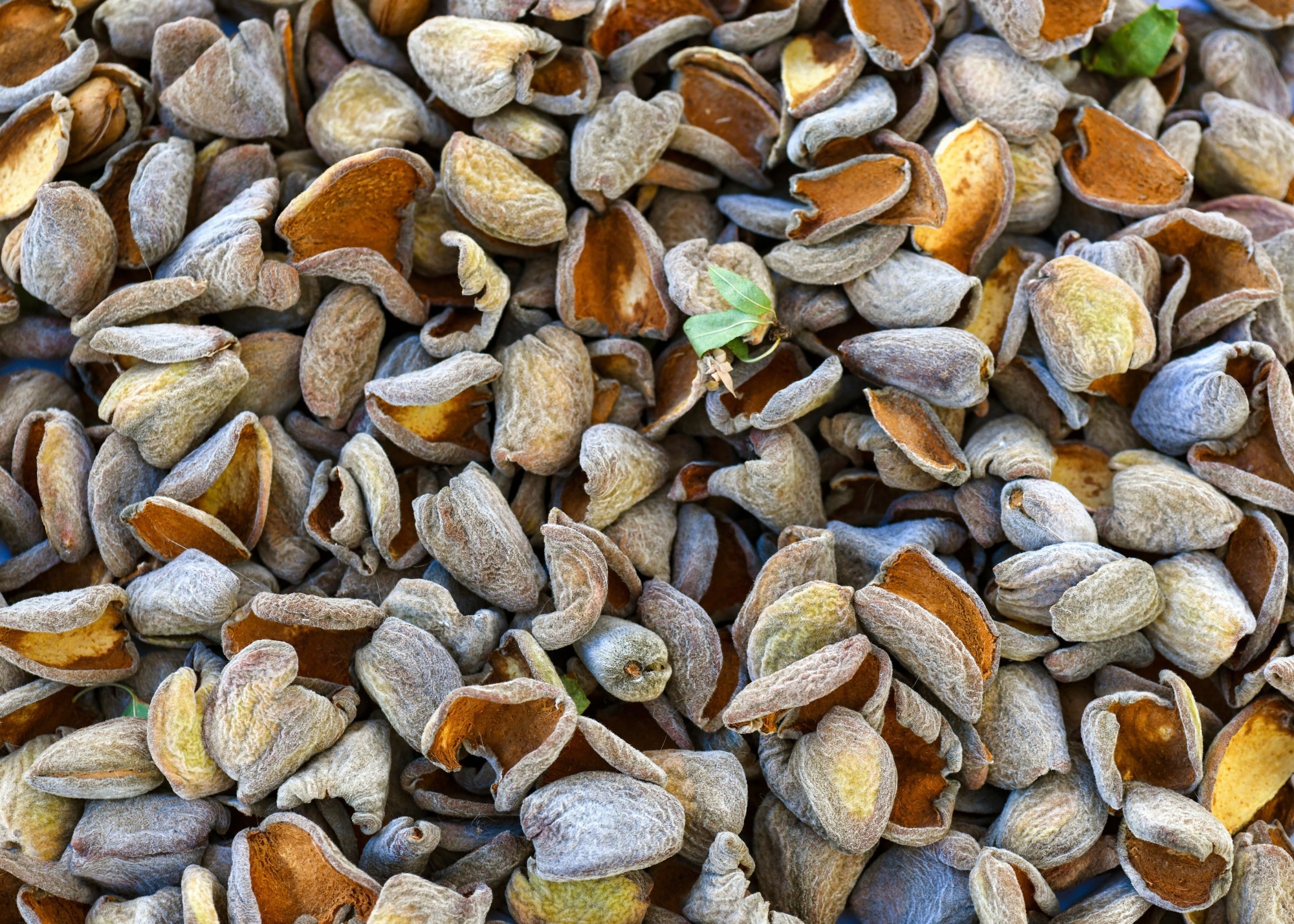Scientists have developed biodegradable sensors from waste almond shells, offering a sustainable alternative to conventional electronics for environmental and agricultural monitoring.

Image Credit: Deborah Lee Rossiter/Shutterstock.com
In a recent study published in Advanced Functional Materials, researchers have unveiled a novel way to turn discarded almond shells into flexible, graphene-based sensors.
Why Almond Shells?
Laser-induced graphene (LIG) is a promising material for sensors and circuits, typically made by laser-scribing carbon-rich plastics like polyimide. But, as research aims to better contribute to eco-friendly science, researchers are looking at biomass-derived alternatives.
Cellulose-based materials, such as wood, paper, and crop byproducts, have already shown potential as eco-friendly LIG sources. Almond shells stand out thanks to their high lignocellulose content, abundance, and low cost.
This study investigated their potential as biodegradable, laser-scribed electronics. The scientists aimed to produce materials that are not only conductive but also strong, flexible, and degrade naturally in soil.
Turning Shells into Sensors
The team started by grinding hard and soft-shell almond cultivars into a fine powder, less than 50 micrometres in size. They tested the cellulose, hemicellulose, and lignin content to pick the most promising variety.
The resulting powder was blended with biopolymers (such as chitosan, glycerol, and acetic acid) after chemically removing impurities. This created a uniform dispersion, which was cast into thin, flexible films between 0.3 and 1.2 millimetres thick.
These films were then laser-scribed to form conductive graphene directly on their surface. The researchers adjusted the laser’s wavelength, power, and scan speed to create porous, interconnected carbon networks.
The team used Raman spectroscopy, scanning electron microscopy (SEM), and micro-CT imaging to check the consistency and morphological structure of the films.
The electrical conductivity of the laser-treated areas was measured by sheet resistance. Soil burial tests over 90 days confirmed that the materials degraded naturally, while mechanical tests showed the films remained strong and flexible enough for practical use.
The team then built simple resistive sensors and humidity detectors on the films to test their viability. They monitored their responses to environmental changes through impedance and resistance measurements.
Download your PDF copy now!
Soft Shells, Strong Results
Soft-shell almond powder, with about 38.7 % cellulose and 30.6 % lignin, proved to be the best precursor for laser-induced graphene. The resulting composite films were flexible, strong, and easy to process.
Laser scribing successfully produced a porous graphene layer, verified by SEM, with the characteristic D and G Raman bands of carbon. The balance of defects and graphitization delivered good conductivity, and the measured sheet resistance was low enough for real-world sensors.
When tested, the devices responded quickly and reliably to changes in humidity, performing as well as, or better than, similar sensors made from conventional materials.
Making Tech More Sustainable
The study demonstrated how agricultural waste can be converted into functional and biodegradable electronics, reducing e-waste and supporting sustainable technologies.
Their approach not only delivers a practical material for transient electronics but also demonstrates how eco-friendly resources can be integrated into next-generation smart agriculture and environmental monitoring.
Journal Reference
Steksova F., et al. (2025). Laser-Induced Graphene from Waste Almond Shells for Sustainable Electronics. Advanced Functional Materials e07462. DOI: 10.1002/adfm.202507462, https://advanced.onlinelibrary.wiley.com/doi/10.1002/adfm.202507462